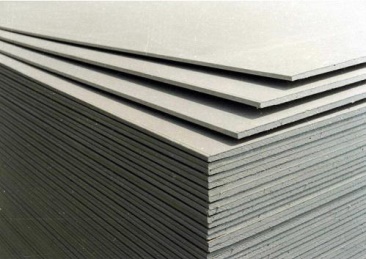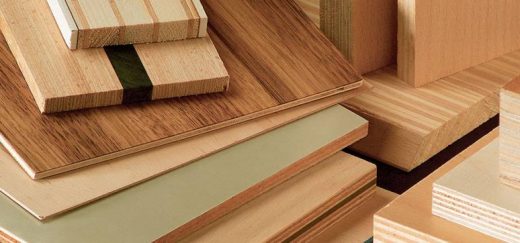What is Particle Board?
Engineered wood products are used to produce furniture and other wooden objects for both internal and exterior use. One of the many engineered wood products is particle board. It’s also known as chipboard or low-density fiberboard. The beautiful thing about modern woodworking is that you may choose from a variety of engineered wood components for your projects. Particleboard is one such wood product. Because it was made from wood chips coupled with synthetic resin and other binder components, particleboard is also known as chipboard. It’s a waste wood product manufactured by gluing wood chips, sawdust, or sawmill shavings together with synthetic resin or another binder. The adhesive urea-formaldehyde is often used to bind wooden chips. Particleboards are made by pressing and extruding these mixed materials.
Particleboard can be used as a plywood substitute for furniture, interior wall and ceiling lining, countertop substrate, floor decking, roof sheathing, underlayment, and interior ornamental paneling, etc.
Types of Particle Boards:
1.Single-layer Particle Board:
Particleboard with a single layer is made out of wood particles of the same size that have been crushed together. It is a dense, flat board that can be veneered or plastic laminated but cannot be painted. This sort of particleboard is water-resistant but not waterproof. Particleboards with a single layer are ideal for interior use.
2.Three-layer Particle Board:
A layer of large wood particles sandwiched between two layers of small, dense wood particles makes up a three-layer particle board. The outer layer contains more resin than the inner layer. Three-layer particleboard has a flat surface that is suitable for painting.
3.Graded-Density Particle Board:
A layer of coarse wood chips is included in the graded-density particleboard. Two layers of fine wood particles are placed between this layer and the next. Particleboard of this type can be used to make wooden furniture and cabinets.
4.Melamine Particle Board:
A sheet of melamine-impregnated decor paper is glued to the top surface of the plain particleboard using heat and pressure in this form of particleboard. To bond the particleboard and make it water-resistant, melamine-urea formaldehyde resin is used with wax emulsion. Melamine particle boards are scratch-resistant and long-lasting. They’re used in a variety of applications, including wall cladding, wall paneling, modular kitchens, wardrobes, and office furniture. They come in a variety of colours and textures to provide a decorative touch to home decor.
5.Cement-bonded Particle Board:
This board uses cement as a bonding agent and is moisture, fire, and rot-resistant. Cement (60%), wood waste particulates such as wood chips, sawdust, and wooden shavings (20%), and water are used in the production of cement-bonded particleboard (20%). These boards are more durable, fireproof, and termite resistant due to the cement content. In the presence of moisture, cement-bonded particleboard exhibits significant expansion and shrinkage. Fire-resistant furniture, false ceilings, internal and external walls, and permanent shuttering for concrete floors and walls are all examples of their applications.

Fig 2: Cement-bonded Particle Boards
6.Laminated Particle Board:
Particleboard with a laminate sheet on the surface is referred to as laminated particleboard. Particleboard gains improved aesthetics and durability with the addition of the laminate sheet.
7.Veneered Particle Board:
A thin slice of wood known as the veneer is attached to the surface of the veneered particleboard. Veneered particleboard seems like real wood. In addition, as compared to normal particle board, veneered particleboard is more resistant to warping.
Properties of Particle Boards:
1) Particleboards are incredibly lightweight when compared to MDF or plywood since they are made of wood residue and waste.
2) They have a higher density than natural wood and plywood, but a lower density than MDF and high-density fibreboards.
3) Due to their fragile materials, particle boards are unable to bear severe weights.
4) Moisture can damage particle boards. When moisture is present, they swell, crack, and discolour.
5) Particleboards are susceptible to warping. Coating them with primer or paint, on the other hand, can improve their resistance and strength.
6) Due to their low strength, particle boards are less durable than plywood or solid wood. However, using laminates or veneers on the surface can aid to improve durability.
7) Particle boards are ideal for usage in recording studios and performance venues because of their outstanding sound insulation capabilities.
8) A layer of melamine can be applied to the top surface of particle boards to make them fire-resistant.
9) They are environmentally friendly materials because they are made from recycled materials and trash such as wood chips, wood shavings, and sawdust.
Uses of Particle Boards:
1. In temporary structures with low load application, particleboard is used as a flooring material.
2. They serve as a base for parquet, wood, and carpeted floors.
3. Because it is non-load bearing and has good thermal and acoustic insulation properties, particleboard is a great choice for partition walls.
4. Because of their thermo-acoustic insulation properties, laminated particle boards, and cement particle boards are commonly used in false ceilings.
5. They feature a smooth and flat surface for bonding with the door skin and can handle more screws than MDF.
6. Beds, storage units, shoe racks, TV cabinets, and small shelves can all be made out of plain particleboard.
7. Televisions, speaker boxes, sewing machine tops, and vehicle parts all are manufactured by using particle boards, particularly wood veneer particle boards.
References:
1) https://mccoymart.com/post/what-is-a-particle-board-and-its-types/
2) https://gharpedia.com/blog/types-of-particle-boards/
3) https://www.woodworkmag.com/types-of-particle-board/
4) https://blog.plyco.com.au/types-of-particle-board
5) https://thedesignbridge.in/blog/particle-boards-laminated-chipboard-classification-and-modifications/
If you have a query, you can ask a question here.



